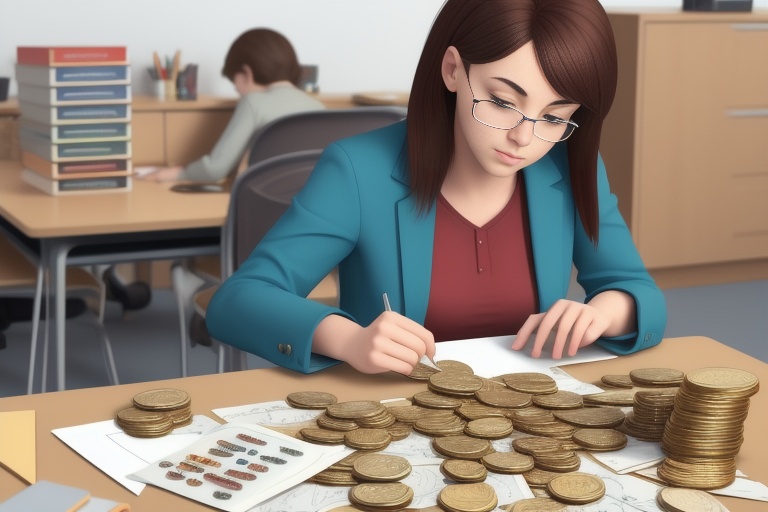The realm of coin collecting is multifaceted, extending from the intricate craft of minting to the meticulous care in preservation and appreciation of each unique coin's history and aesthetics. As a seasoned collector and dealer, I am delighted to share with you the insights gleaned from a lifelong passion for numismatics. This article will serve as your gateway to understanding both the manufacturing process of coins and the essential lexicon of the collector's world.
The realm of coin collecting is multifaceted, extending from the intricate craft of minting to the meticulous care in preservation and appreciation of each unique coin's history and aesthetics. As a seasoned collector and dealer, I am delighted to share with you the insights gleaned from a lifelong passion for numismatics. This article will serve as your gateway to understanding both the manufacturing process of coins and the essential lexicon of the collector's world.
Coin Production: From Metal to Money
The evolution of coin minting from ancient manual methods to modern automated processes is truly remarkable. Coin production is a complex art, starting with large metal pieces known as ingots. These ingots are transformed into thin strips of metal, meticulously rolled to the specific thickness needed for the coins. The composition of coins has varied over time; today, most U.S. coins feature a core of one metal, such as copper or zinc, and an outer layer of another, like copper-nickel, creating what's known as 'clad' coins.
These metal strips are then introduced to a blanking press, an apparatus that punches out circular metallic discs—or blanks—as effortlessly as one would cut cookies from dough. These blanks are subjected to an annealing furnace, where extreme temperatures soften the metal, readying it for the striking of designs. A rapid cooling process follows, preventing the blanks from adhering to each other.
The journey from blank to coin is not yet complete without the introduction to the upsetting mill. Here, the blank, now referred to as a planchet, gains its distinctive raised rim. With precision, planchets are fed into the coining press where both obverse (heads) and reverse (tails) designs are imprinted under enormous pressure, ranging from 35 to 100 metric tons. The end result is the common coin that jingles in your pocket, a testament to a blend of advanced technology and meticulous craftsmanship.
Understanding Coin Terms
Grasping the terminology associated with coin collecting enhances the hobby's experience. 'Obverse' designates the front of the coin, generally bearing a significant portrait, while the 'reverse' denotes the back side. Coins, especially dimes, are often adorned with 'reeding,' which is the series of grooved lines that run along their edges.
When speaking of 'clad' coins, we refer to those with a core and outer layer of different metals. A 'type set' is a collection that features one exemplar of each design or issue of a coin. Furthermore, 'grading' coins is an evaluation of their condition, ranging from 'uncirculated' to 'poor.' Unlike grading, 'proof' defines a coin with a specific style of finish marked by a brilliant, mirror-like surface.
Storing Your Treasures
A collector's priority should be the conservation of their coins. Storage options vary from basic cardboard folders—suitable for circulated coins—to plastic flips and archival-quality envelopes, each offering different levels of protection and suitability. It is crucial to select materials that do not compromise the integrity of the coins over time.
Coin Programs and the Federal Reserve
The United States has introduced several coin programs such as the 50 State Quarters and American the Beautiful Quarters, each with designs that honor the country's rich history and diverse landscapes. Additionally, the Federal Reserve serves as the Central Bank of the United States, ensuring that financial institutions maintain a sufficient currency supply, both in digital and physical forms.
Legal Tender and Historical Figures
Legal tender notes, introduced in 1862, stand as the recognized medium of exchange within the country, with currency notes featuring prominent historical figures from George Washington on the $1 bill to Benjamin Franklin on the $100 bill.
In Summary
With proper storage methods and a deeper comprehension of both coin production and numismatic terminology, you can greatly enrich your coin collecting journey. Understanding the various roles institutions like the Federal Reserve play in flowing currency enhances the backdrop of your collection. As you progress in the hobby, remember to appreciate not just the monetary value but the cultural and historical significance each coin carries.
By continuously expanding your understanding of coin production, key terms, and important aspects of the coin collecting world, you will become a more informed and successful coin collector. So, keep learning, exploring, and enjoying the wonderful hobby of coin collecting!
Information for this article was gathered from the following source.

